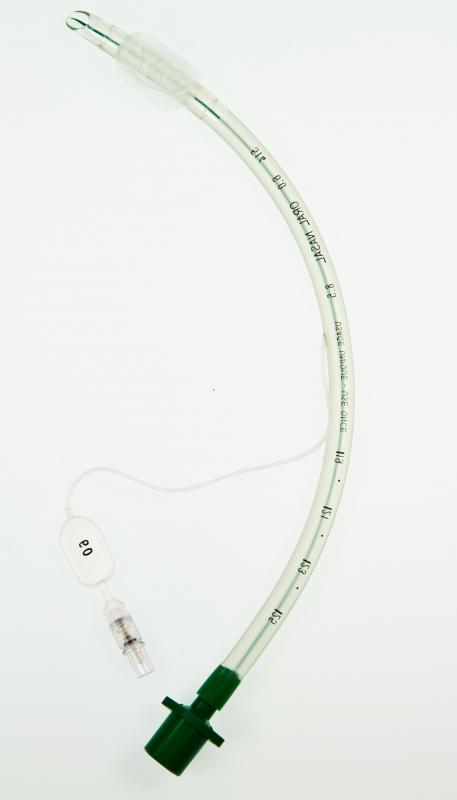At WiseGEEK, we're committed to delivering accurate, trustworthy information. Our expert-authored content is rigorously fact-checked and sourced from credible authorities. Discover how we uphold the highest standards in providing you with reliable knowledge.
What is Tracheal Intubation?
Tracheal intubation, also known as endotracheal intubation, is a medical procedure that involves inserting a tube into the trachea through the nose or mouth. This procedure is used both in emergency situations and in non-emergencies, such as preparation for surgery. There are a few risks and complications that may occur when performing a tracheal intubation, particularly in a fast-paced emergency situation.
Intubation may be used to deliver anesthetic or other gaseous medications, attach a patient to a respirator for artificial respiration, or allow a patient to breathe if his or her airway is obstructed. Tracheal intubation is performed when breathing through the mouth and nose is insufficient or impossible and a direct route to the lungs is needed. The tube is often inserted with the help of a special scope to help the doctor see, and the patient's head is positioned, if possible, to allow good visibility.

In first aid or emergency medicine, difficulty breathing can quickly become life-threatening to the patient, and an adequate air supply is a top priority. Tracheal intubation is usually done through the mouth in these situations, and emergency medical professionals are trained to perform it very quickly. The patient will usually be unconscious when tracheal intubation is performed, but he or she may be heavily sedated if there is enough time.

There are some risks involved in any intubation procedure. Bleeding and infection may occur, and it is possible that the process of inserting the tube may damage surrounding structures, such as the larynx, vocal cords, esophagus, or trachea itself. One of the most serious risks is inserting the tube improperly so that proper airflow is not established, in which case the patient can die from lack of air. The vast majority of endotracheal intubations have no complications, except perhaps a sore throat.
Some patients have 'difficult airways', meaning that it is harder to insert the tube or harder for the medical professional to see what he or she is doing. This can be due to a small mouth, obesity, facial tumors or trauma, or other patient characteristics. Special tools or procedures may be needed to successful intubate these patients. If a tracheal intubation is impossible in the available time, a tracheostomy, during which an opening for the tube is surgically created in the patient's throat, may be needed. Intubation through the nose or mouth is preferred because it is safer for patients and does not require surgery, but if the upper airway is blocked or the patient cannot be moved due to spinal or head trauma, a tracheostomy is a measure used to save the patient's life.
AS FEATURED ON:
AS FEATURED ON:












Discuss this Article
Post your comments